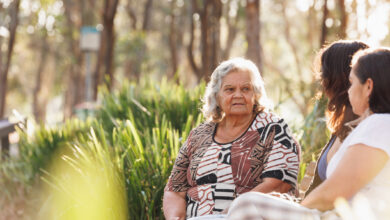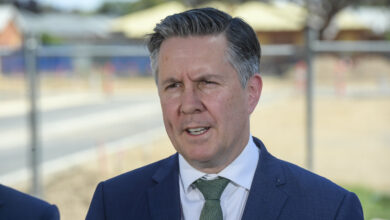Ageing population care sectors ‘next great test’

Aged care providers will buckle under Australia's ageing population unless swift action is taken to meet an oncoming wave of demand, the aged care minister has warned.
Anika Wells told the Melbourne Institute Outlook conference that demand for aged care services in Australia will rise by nearly 10 per cent annually over the next 20 years.
Wells said providers, who have undergone a period major upheaval and transformation over the past two years, are at the precipice of their greatest challenge - the "boomer generation."
"This is not a rogue wave, but a rising tide that swells for a decade or more before it peaks,” Wells said on Wednesday.
“Estimates suggest demand for high levels of care, including residential care, will surge by 5-9 per cent every single year as the boomers age."
In 2021, approximately 4.31 million people in Australia were aged 65 and over.
This number is projected to grow to 6.66 million by 2041, an increase of 54 per cent, according to the ARC Centre of Excellence in Population Ageing Research.
As the first of the generation born between 1946 and 1966 turns 80 within the next four years, the aged care system is under a ticking time clock to meet changing care quality expectations.
"At a certain point, some will have to look to residential aged care, and they will expect a level of care they have worked hard over a lifetime to secure," Wells said.
"Unless we seek innovative models of care, embrace creativity, technology and international best practice we will not be prepared for the greatest impact on aged care this century."
In last week's federal budget, the government set aside $27 billion towards reforming in-home and residential care.
This included funding for increases in the number of care minutes allocated to people living in nursing homes, as well as access to 24/7 registered nurses by 2023.
In its budget media release, the health department said addressing workforce issues was its “biggest priority”.
This prompted Labor's investment in 20,000 extra university places and 180,00 fee-free TAFE places – with at least 15,000 of vocational education degrees reserved for aged care.
In a recent interview with Aged Care Insite, former ACCPA chief and longtime sector advocate Paul Sadler said a pay rise was "absolutely critical" to fix the sector's workforce attraction and retention issues.
"The big issue for the system is how we are going to afford the cost of the ageing population and the increasing costs of aged care," he said.
"The government will need to start making difficult decisions on how to raise more revenue for the sector."
Email: [email protected]





No support received from a large Church based Brisbane provider who are paying their community allied health workers approx $10 per hour less than their hospitals allied health workers. This has resulted in experienced community allied health staff resigning leaving positions unfilled and reducing numbers of staff to provide a community home visiting service